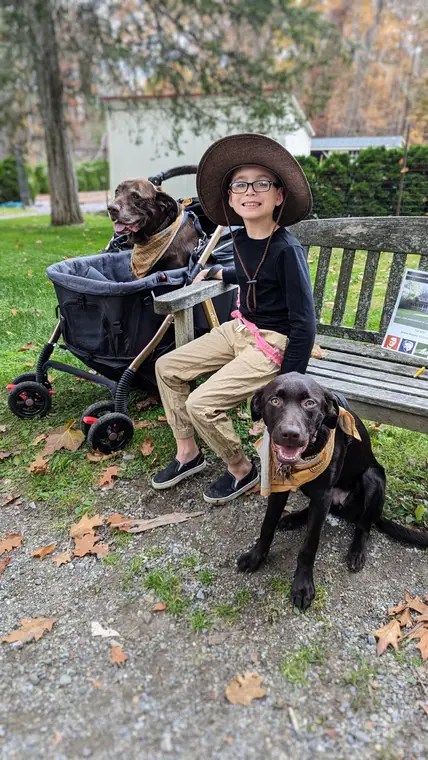Eleanor Roosevelt Dog Policy
Eleanor Roosevelt National Historic Site is Dog Friendly
Eleanor Roosevelt National Historic Site preserves one of Eleanor Roosevelt's homes where she and her husband, Frankin, lived and entertained visitors. The site also showcases the history of the Roosevelts and contains many exhibits.
The site is fairly dog friendly. While dogs are not allowed inside buildings, so you'll miss some of the exhibits if you bring a dog, dogs are allowed on most of the grounds and trails, and even some of the gardens. Dogs must be kept on a leash, and dogs cannot be left unattended here.
Eleanor Roosevelt National Historic Site also runs the BARK Ranger Program, where you can earn a special dog tag by learning and following responsible practices (see the BARK Ranger section below).
- Website
- https://www.nps.gov/elro/index.htm
- Pet Policy Details
- https://www.nps.gov/elro/planyourvisit/pets.htm
- BARK Ranger
- Yes []
- Annual Visitors
- 9,575
Trail Policy
Dogs are allowed on trails while on a leash no longer than 6', including:
- Eleanor's Walk - 1 mile through woodland paths with views of historic buildings and historical exhibits. Eleanor walked this trail daily.
- Top Cottage Trail - 2 miles roundtrip, moderately difficult through woodlands, brings you to the highest point in the trail system where you can view Top Cottage.
BARK Ranger
Bark Ranger is a really great program that some National Park Service destinations run. The Bark Ranger program teaches dog owners responsible behaviors with their dogs, and in return you get a special dog tag that’s different for each park (note: some parks require you to purchase the tag at the end). You start the program by going to a park office and picking up a checklist. When you complete the checklist (see the link below for more details), you can get your special dog tag.
B.A.R.K. is an acronym for:
- B: Bag your poop
- Help keep the park clean by bagging and picking up your dog poop, and properly disposing of it. Don’t leave your bagged poop on the side of the trail, hanging from branches, or throw it into the woods. Please note dog poop is not a natural fertilizer — it can carry disease that can spread to wildlife or other dogs.
- A: Always wear a leash
- Dogs must be restrained on a leash no longer than 6'. Retractable leashes that extend beyond 6' are not allowed. Not everyone appreciates a dog running up to them, and many people are scared or allergic to dogs — a leash prevents uncomfortable situations between your dog and others. Leashes also help protect your dog from running off if anything spooks them.
- R: Respect wildlife
- Dogs can chase or scare wildlife such as birds and turtles. They can also damage nesting areas. Some parks have wildlife, such as bears, coyotes, or wolves, that can threaten your dog. Please be respectful of wildlife with your dog, and if you do encounter wildlife, keep dog at distance to protect both your dog and the wildlife.
- K: Know where to go
- Know which trails allow dogs, and which don’t. Don’t leave dogs unattended in vehicles while you go off to hike. See the link below for more details.
For more information on the Bark Ranger program, please see: https://www.nps.gov/elro/planyourvisit/bark-ranger.htm
We also have a list of all parks that run the BARK Ranger program.
Location & Map
Have a photo of your dog here?
Note: Policies can change -- please make sure to check official dog/pet policies prior to making plans or booking travel.
Please tell us if you think there’s anything we should add or change on this page.
